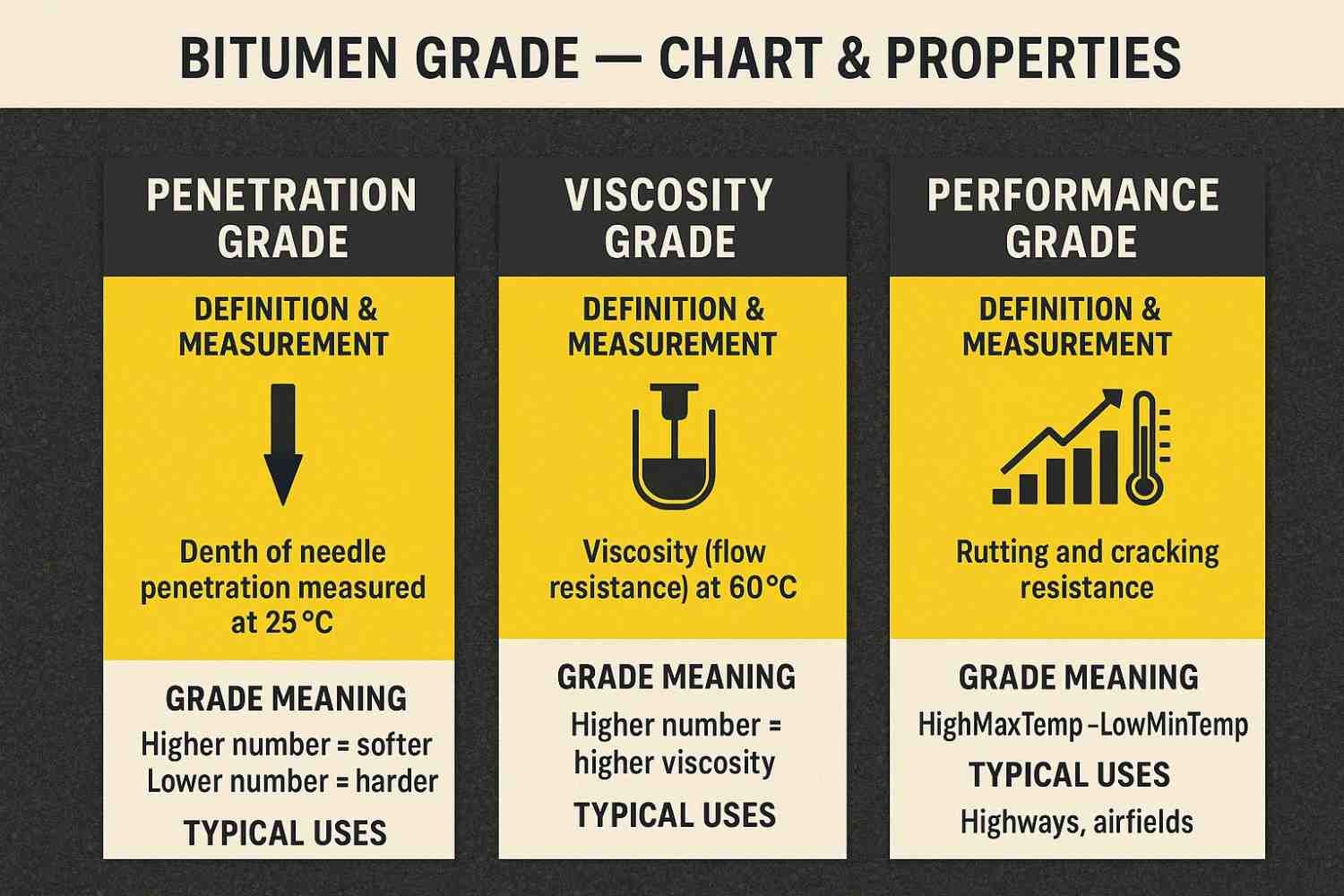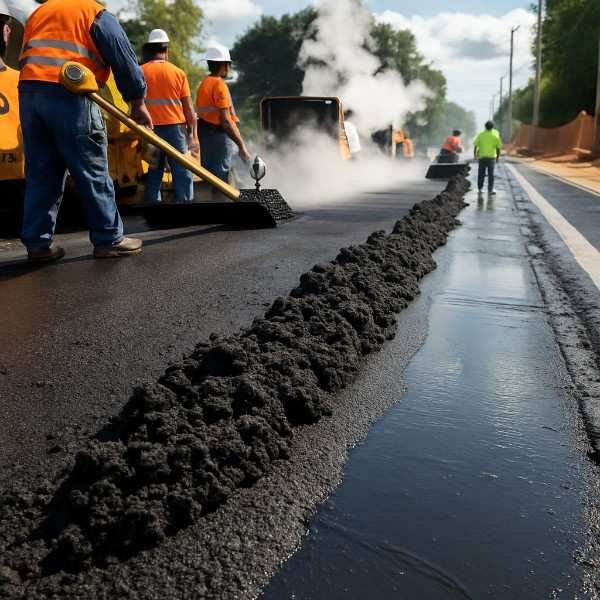Bitumen in Construction: What It Is, Types, and Uses
Table of Contents
Introduction
In civil projects around the world, Bitumen in Construction is a trusted binder for roads, roofs, and waterproofing systems. It is black, sticky, and highly adhesive, which makes it ideal for binding aggregates in asphalt and for sealing structures against moisture. This article explains Bitumen in Construction in simple language—what it is, the major types, how it is used on site, and why it is so important for durable infrastructure.
What is Bitumen in Construction?
Bitumen in Construction is a petroleum-based material obtained during crude oil refining. It behaves like a viscoelastic binder: it softens when heated and becomes firm when cooled. Because of its strong adhesion, water resistance, and durability, engineers prefer Bitumen in Construction for long-lasting pavements and reliable waterproofing systems.
In practical terms, Bitumen in Construction works like glue—holding stone and sand together in asphalt mixes, while also forming protective layers on roofs, basements, and foundations to keep water out.
Why Bitumen in Construction Matters
- Durability: Bitumen in Construction resists traffic loads and weather cycles.
- Waterproofing: It provides a continuous water barrier for roofs and substructures.
- Flexibility: The material tolerates small movements and temperature changes.
- Cost-Effectiveness: With proper design, Bitumen in Construction offers excellent lifecycle value.
- Ease of Use: Standard equipment and proven methods make site work efficient.
Types of Bitumen in Construction
- Penetration Grade Bitumen: Common grades (e.g., 60/70, 80/100) for road works; widely used in Bitumen in Construction.
- Viscosity Grade Bitumen (VG): VG-10, VG-20, VG-30, VG-40 selected by climate and traffic demands.
- Cutback Bitumen: Bitumen diluted with solvents for prime coats and patch repairs where heating is limited.
- Bitumen Emulsion: Bitumen dispersed in water; useful for cold weather works and surface treatments.
- Polymer-Modified Bitumen (PMB): Enhanced elasticity and rutting resistance for heavy-duty pavements and airports.
Common Grades of Bitumen
Selecting the right grade is critical for performance. In Bitumen in Construction, engineers typically compare Penetration, VG, and Performance Grades (PG). Choice depends on climate, traffic loading, and construction method.
- Penetration: 60/70 for moderate climates; 80/100 for cooler regions.
- VG Grades: VG-30 and VG-40 often used in hot climates and heavy traffic corridors.
- PG System: Grades like PG 64-10 selected to match local temperature ranges.
How Bitumen in Construction Is Used On Site
- Asphalt Paving Basics
- Heat and mix aggregates with Bitumen in Construction to form asphalt.
- Lay the hot mix with a paver; maintain uniform thickness and temperature.
- Compact immediately using rollers to achieve target density and smoothness.
- Waterproofing & Roofing
- Clean and prime the substrate before applying Bitumen in Construction membranes or coatings.
- Ensure overlaps are sealed; create proper drainage to prevent ponding.
- Protect the finished layer from mechanical damage and UV (if required).
- Surface Treatments
- Use emulsions or cutbacks for tack coats, prime coats, and chip seals in Bitumen in Construction.
- Control application rate for uniform coverage and bond strength.
Key Properties & Specs
In practice, engineers evaluate these parameters for Bitumen in Construction:
- Penetration (consistency at 25°C)
- Softening Point (temperature susceptibility)
- Viscosity (flow behavior at service temperatures)
- Ductility (ability to stretch without breaking)
- Flash & Fire Point (safety during heating)
- Specific Gravity and Water Content

- Match properties to local climate and traffic for reliable performance.
- Follow national specs and project requirements when selecting Bitumen in Construction grades.
Importance of Bitumen in Construction
- Delivers smooth, safe, and durable pavements.
- Provides long-term waterproofing for roofs and foundations.
- Supports rapid construction with standard equipment and crews.
- Enables cost-effective maintenance strategies over the lifecycle.
- Proven track record: Bitumen in Construction has decades of successful use worldwide.
Applications
- Highways, urban roads, and rural pavements
- Airport runways and taxiways
- Bridges (waterproofing layers) and parking areas
- Roofing, basements, tunnels, and retaining walls
- Prime coats, tack coats, and chip seals in Bitumen in Construction
Conclusion
Bitumen in Construction remains a core material for modern infrastructure. With the right type and grade, it provides strong binding, waterproofing, and long service life. From roads to roofs, well-designed and properly executed works using Bitumen in Construction deliver reliable performance and excellent value for money.





